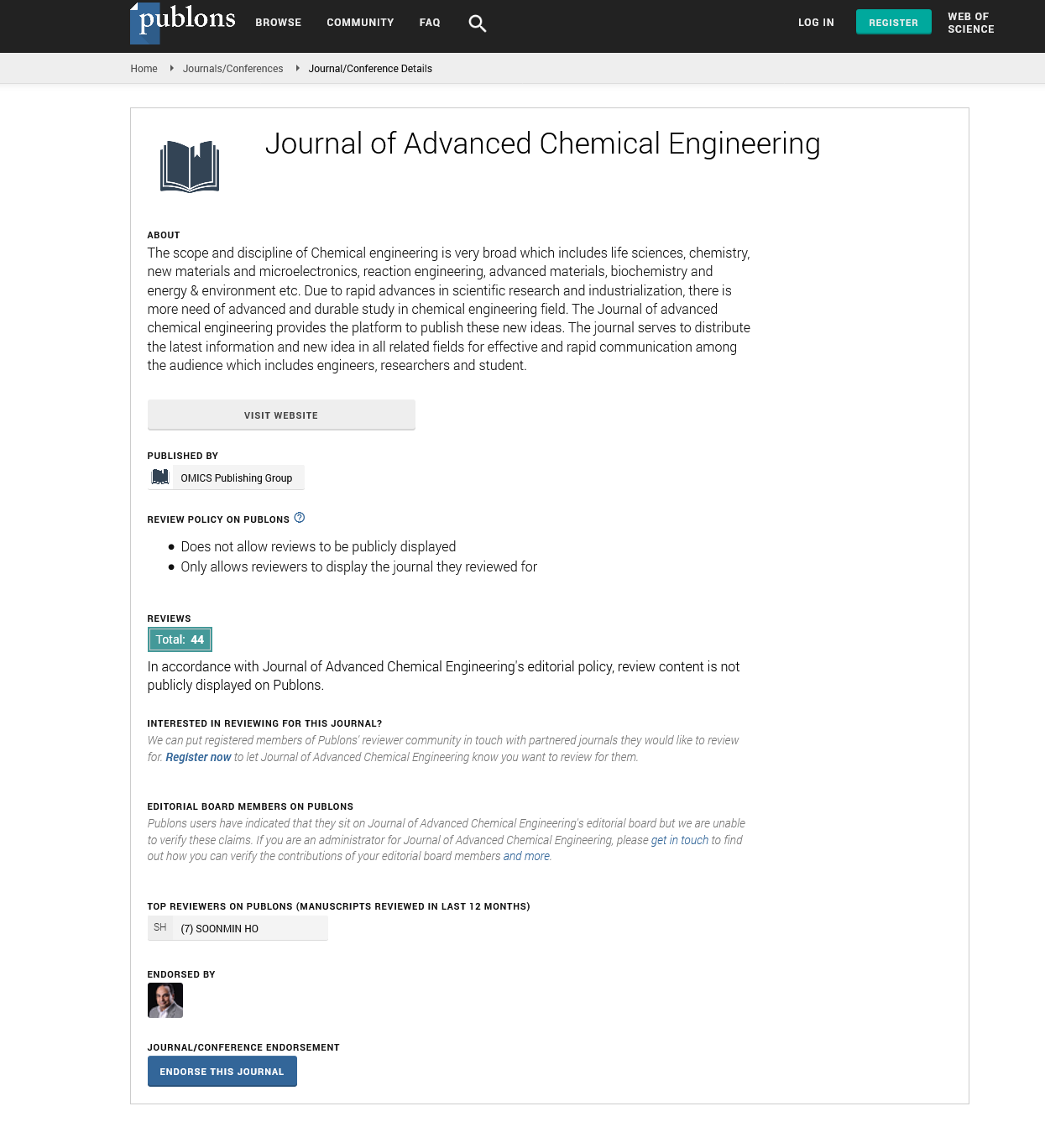Indexed In
- Open J Gate
- Genamics JournalSeek
- Smithers Rapra
- RefSeek
- Directory of Research Journal Indexing (DRJI)
- Hamdard University
- EBSCO A-Z
- OCLC- WorldCat
- Scholarsteer
- Publons
- Geneva Foundation for Medical Education and Research
- Google Scholar
Useful Links
Share This Page
Journal Flyer

Open Access Journals
- Agri and Aquaculture
- Biochemistry
- Bioinformatics & Systems Biology
- Business & Management
- Chemistry
- Clinical Sciences
- Engineering
- Food & Nutrition
- General Science
- Genetics & Molecular Biology
- Immunology & Microbiology
- Medical Sciences
- Neuroscience & Psychology
- Nursing & Health Care
- Pharmaceutical Sciences
Commentary - (2022) Volume 12, Issue 10
Bioreactors and its Operational Principle
Liu Xiaou*Received: 03-Oct-2022, Manuscript No. JACE-22-18866; Editor assigned: 06-Oct-2022, Pre QC No. JACE-22-18866 (PQ); Reviewed: 21-Oct-2022, QC No. JACE-22-18866; Revised: 31-Oct-2022, Manuscript No. JACE-22-18866 (R); Published: 07-Nov-2022, DOI: 10. 35248/2090-4568.22.12.252
Description
Bioreactors are critical pieces of mammalian cell culture equipment. Stirred Tank Bioreactors (STRs) and Orbital Shaken Bioreactors (OSRs) are currently the most commonly used types of bioreactors in laboratory or pilot-scale mammalian cell cultivations. OSRs have grown in popularity in recent years due to their simple stirring principle, low cost, simple operation, and suitability for disposable experiments. Furthermore, the orbital shaking motion of OSRs may prevent sedimentation and improve gas exchange while avoiding harmfully high shear rates compared to STR. Improved mixing performance of OSRs is required as an important disposable bioreactor. According to studies, different OSR structures have different effects on mixing performance.
Adding a vertical baffle to a wall, for example, is an effective way to improve turbulence characteristics and mixing performance. A helical track has been shown to be effective in increasing viable cell density in suspension cultivation. A vaulted "bump" on the bottom wall was proposed, and the results showed that the mass transfer rate was significantly increased and that cell accumulation near the bottom wall's centre could be avoided, which is preferable for suspension cultivation with a high viable cell density.
Computational Fluid Dynamics (CFD) simulation is a dependable numerical analysis technology. CFD simulation, when compared to traditional experimental techniques, can save capital and labour and be applied in a variety of situations. CFD simulation has been regarded as a valuable tool for analysing bioreactors such as STRs and OSRs because it can provide a deeper understanding of bioreactor fluid dynamics while reducing the number of models.
The key structural parameter for this type of OSR is the ratio of the outer cylinder diameter to the intercylinder diameter. The value di/d was optimised in that prototype study, and a suitable value of 0.4 was suggested. However, the mass transfer capability was still low in some areas, indicating that the structure of the hollow cylindrical wall could be improved further. Thus, the goal of this study is to continue focusing on the OSR with a hollow cylindrical wall and to examine the effect of the hollow structure's installation height on mixing performance, volumetric mass transfer coefficient (kLa), and shear stress in the OSR.
Orbitally shaking bioreactors (OSRs) have recently seen increased use in the biopharmaceutical industry due to their ability to provide a suitable environment for mammalian cell growth and protein expression. Fluid dynamics information is critical for analysing and optimising various types of bioreactors. Given that the structure has a significant influence on the fluid dynamics in a bioreactor, it is necessary to design or optimise its structure using the computational fluid dynamics (CFD) approach. The goal of this research is to optimise the wall structure of a hollow cylinder OSR proposed in our previous work. Based on previous research, the established CFD model was used to investigate the effects of the OSR's hollow wall on fluid dynamics and the volumetric mass transfer coefficient.
In a fluid bed reactor, which is occasionally used, the incredibly small catalyst particles lay on a distributor plate. The fluid is produced as the gaseous reactants pass the distributor plate, carrying particles along with the gases.
Fluid bed reactors can be used to oxychlorinate ethane to produce chloroethene (vinyl chloride), which is a feedstock for the polymer poly (chloroethene). To serve as a catalyst, alumina is covered with copper(II) chloride and potassium chloride. Because of how thin it is, this support acts like a fluid when gases pass through it.
Citation: Xiaou L (2022) Bioreactors and its Operational Principle. Adv Chem Eng. 12:252.
Copyright: © 2022 Xiaou L. This is an open-access article distributed under the terms of the Creative Commons Attribution License, which permits unrestricted use, distribution, and reproduction in any medium, provided the original author and source are credited.

